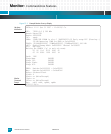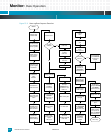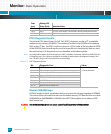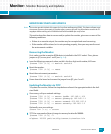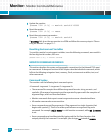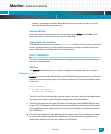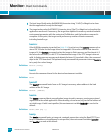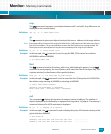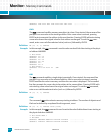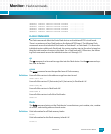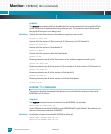
Monitor: Boot Commands
Katana®752i User’s Manual 10006024-04
15-10
3 The host board finally writes 0x596F4F6B (character string “YoOk”) to MagicLoc to show
that the application is ready for the target.
4 The target writes value 0x42796521 (character string “Bye!”) to MagicLoc to show that the
application was found. If necessary, the target then updates its memory-resident loadaddr
environment parameter with the contents of CallAddress, and the bootbus command is
complete. At this point, the target could perform any number of boot commands,
including bootelf or go.
bootcrc
If the NVRAM parameter trycached (see Table 15-4) is set to true, the bootcrc command cre-
ates a CRC16 value for the image found at imageaddr. If the value matches that stored in
imagecrc16, the bootcrc command writes the image to Flash memory and then boots it. If
the values do not match, it calls TFTP to download an image. If the TFTP image is also not
valid, it displays an error message and reboots the board. If trycached is false, the command
skips to the TFTP download. The optional nvonly command line parameter instructs bootcrc
to try only the cached image.
Definition:
bootcrc [nvonly]
bootd
Execute the command stored in the bootcmd environment variable.
Definition:
bootd
bootelf
The bootelf command boots from an ELF image in memory, where address is the load
address of the ELF image.
Definition:
bootelf [address]
bootm
The bootm command boots an application image stored in memory, passing any entered
arguments to the called application. When booting a Linux kernel, arg can be the address of
an initrd image. If addr is not specified, the environment variable loadaddr is used as the
default.
Definition:
bootm [addr [arg …]]
bootp
The bootp command boots an image via a network connection using the BootP/TFTP pro-
tocol. If loadaddress or bootfilename is not specified, the environment variables loadaddr
and bootfile are used as the default.



